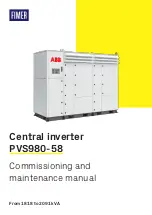
Before we go on to talk about installation, Lets discuss
what needs doing to prepare your locomotive for DCC.
Yes, we understand that it might be new!
However as with all products, it’s quite possible that there
may be a need for adjustment, or perhaps assembly is
imperfect or the factory has made a mistake. Its also
quite possible that that something has been damaged but
not noticed when you made your purchase.
So: This is your chance to check that all is well before
you make it truly yours by adding a details, installing a
decoder and tuning it to your satisfaction.
Examine the locomotive.
Does it run well on DC? Are all details good and is the
finish up to scratch? Are there any details to be added?
Are they in the box as they should be?
Take the top off the locomotive.
(if it’s steam loco also remove tender top if it has one)
This usually a simple procedure. There should be some
instructions in the box, if not, check online or ask - there
are many helpful people on forums or E-groups who will
help you with useful information.
If there are details to add, then it might be best to do it
now - this can be much easier to do with the body off.
Examine the wiring and make sure its routed clear of any
tight places so the wires will not get damaged (it is sur-
prising how often manufacturers get wiring caught be-
tween body and chassis, and this can cause damage
over time, leading to frustrating faults later on).
Tidy it up if necessary.
Check and adjust the electrical power pickups..
These are most often springy fingers of phosphor bronze
that are supposed to touch the back or edge of each
wheel. More often than not they are not well adjusted.
Move the any wheels that have pickups left and right and
make sure that no matter where the wheel is, the pickups
never lose contact.
If they do, then they will need adjusting.
Remove anything in the way then gently bend the pickup
outwards a little more. If possible just increase the initial
bend at its root. If you can’t get to that area, bend as far
from the tip as possible as this will give the best contact
with minimum drag.
If it is DCC ready, remove the blanking plug from the DCC socket
Examine the socket The drawing to the right shows the
terminal numbers. Check for solder bridging any two of
the terminals. Terminals that must NOT be bridged are:
For an 8-pin, check most carefully between 1 & 8, 4 & 5.
For a 6-pin, check most carefully between 1,2,3,4
DCCconcepts Pty Ltd, 3/13 Lionel St., Naval Base WA 6165 Australia. * www.dccconcepts.com * +61 8 9437 2470 * [email protected]
Check for suppression capacitors.
Locomotives sold for DC running in UK and Europe will
usually have some suppression on the DC motor. This
usually includes capacitors and resistor-like items called
inductors. When running on DCC they are not needed.
You could of course leave them there, but quite often,
they will cause poor running, especially at slow speeds,
because the capacitor interferes with the very important
communication between the motor and the decoder.
The best answer is to remove it all and simply take wires
directly between (for an 8-pin socket) pin 1 (orange) and
one motor brush, pin 5 (grey) and the other motor brush.
However if you are careful, you can also just remove the
capacitor (it usually looks like a tiny biscuit coloured disc)
by just cutting its leads close to its body and making sure
no bare wire ends touch where they should not. Please
note that some loco brands like Bachmann, may have 2
or 3 of them attached to the motor. Remove them all.
Installing a decoder in a DCC-ready locomotive.
Now all of the pre-checks are done, the unnecessary
suppression parts are gone and all is well, it is time to
install the decoder. This is the simplest step of all!
For an NEM652 8-pin plug/socket or DP decoder.
Pin 1 is also the orange wire. It will be marked on the de-
coder and the locomotive socket with a 1, a star or a dot.
Orient the plug/socket correctly and gently but firmly
press it into place.
For a 6-pin NEM651 plug/socket or DP decoder.
Pin 1 is also the orange wire. It will be marked as per the
8 pin but if not, you would normally orient the decoder
with the component side outwards. Orient the plug/socket
correctly and gently but firmly press it into place.
For a 21-pin 21MTC Direct-Plug decoder.
Observe the drawing below - this is the socket as you see
it when looking at the locomotive.
Orient the decoder with the connector on top of the pcb
and facing you, so that the locomotive pins will enter the
PCB before entering the socket.. Align it very carefully
(the pins are fine and can bend if you do not). Press
evenly and firmly until the two PCBs are close together.
Also please see the more detailed installation guide
that is on our website @ www.dccconcepts.com






















